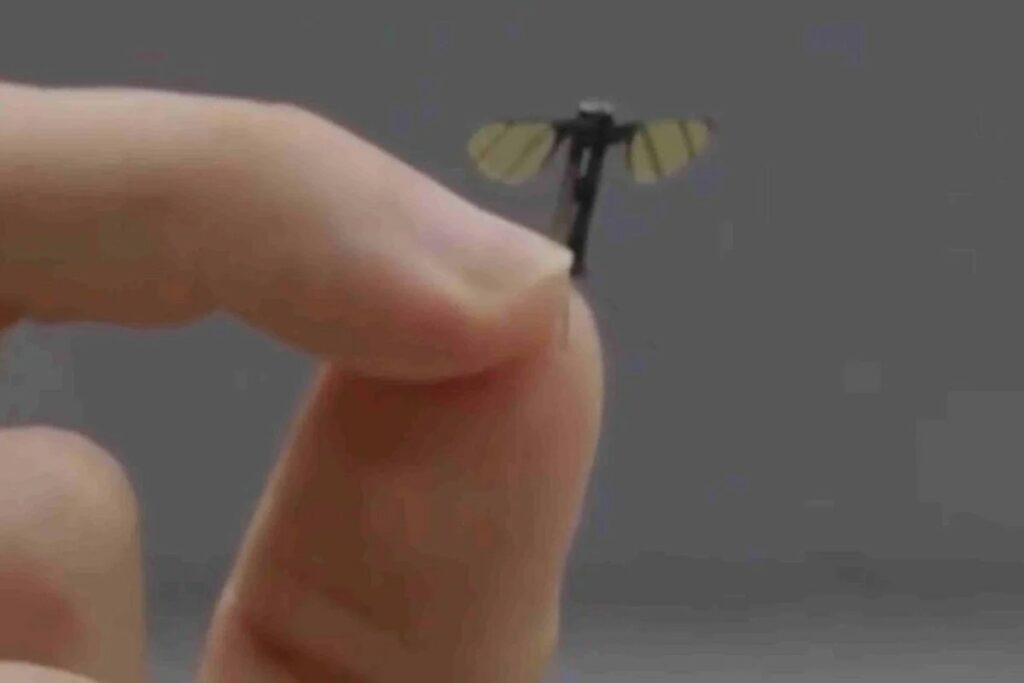
Redazione RHC : 29 June 2025 10:10
In the military sector, the trend to miniaturize drones seems to know no limits, especially when the goal is to operate without being detected. An example of this race to miniaturization is the new drone developed by a group of researchers at the National University of Defense Technology in Changsha, China.
This drone has a peculiar characteristic: its physical structure has been designed to resemble that of a mosquito, with very small dimensions, 2 centimeters, compared to the 1.5 centimeters of its larger predecessor, and an extremely low weight of only 0.3 grams.
This drone is composed of a black vertical body, two transparent wings and three legs “thin as a hair”, reports the South China Morning Post. Despite its small size, it carries several power systems, some sensors, mini-cameras and electronic controls. According to the South Korean newspaper Chosun Ilbo, its wings can flap up to 500 times per second. Another model developed by the research team has four wings and can be controlled by a smartphone.
In an interview with CCTV 7, one of the students cites several use cases for these drones, such as intelligence reconnaissance and carrying out special missions on the battlefield. The device could also be used for surveillance missions and identification of people and objects in difficult-to-access terrain. But its main interest lies in its detection capabilities: it can remain incognito, eluding the vast majority of conventional radar systems.
Details on this device remain scarce, and it is currently unclear whether China intends to use it on a military basis or whether it is simply a research project. The researchers did not provide details on the drone’s autonomy or how often it will collect and transmit data. Regardless of its stage of development, the device is of concern to several defense experts, who fear it could be misused to listen in on conversations or infiltrate sensitive public and private sites.
China is not alone in designing devices that mimic insects. Across the Atlantic, Harvard University unveiled RoboBee in 2019, a small object with a 3-centimeter wingspan for research and artificial pollination.
Developed over twelve years, this flying robot drew its energy from photovoltaic panels and was equipped with artificial muscles to flap its wings 120 times per second. The Black Hornet micro-drone from Norway’s Flir Systems is also used by 19 NATO countries and allies, including France. Larger than the first two drones (it fits in the palm of a hand), this drone is used for short-range reconnaissance.
 Redazione
Redazione